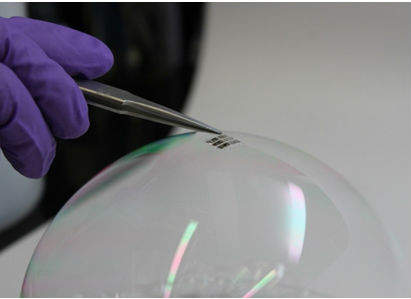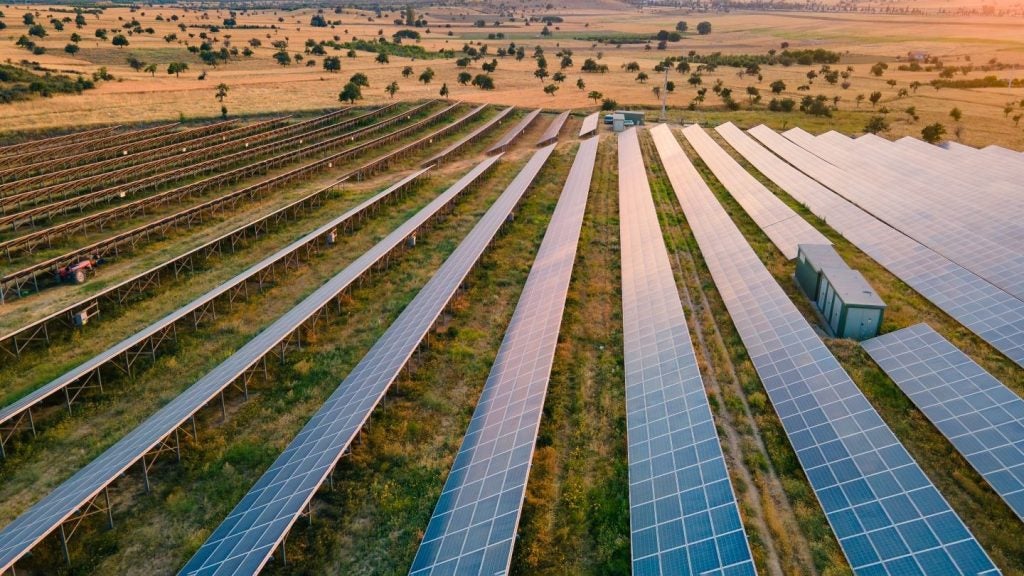

A core challenge for pioneering technology is to transform big, unwieldly machines and devices into tiny ones that have a realistic retail potential and can be used with ease. Not only is making a device small practical, it’s also likely to be more efficient and cost-effective in the long-run. For example, if solar cells on a roof are as energy-efficient as older ones twice the size, then more electricity can be generated from the same surface area.
Being a more reasonable size, it’s also probable that people would be more open to installing renewable energy devices in their homes, as they won’t take up as much space as first thought.
Tiny technology comes with its challenges though. The wearable tech industry has had a few issues with generating interest due to how bulky some devices can be. The Apple Watch, for instance or Google Glass, which didn’t take off quite as the company hoped, possibly because it doesn’t look sleek enough yet.
The problem with squeezing so much technology into a small device can mean that functionality isn’t always a priority. Also, it has to be ensured that no corners are cut with smaller devices, and they work just as well as a larger version without any performance drawbacks.
How well do you really know your competitors?
Access the most comprehensive Company Profiles on the market, powered by GlobalData. Save hours of research. Gain competitive edge.

Thank you!
Your download email will arrive shortly
Not ready to buy yet? Download a free sample
We are confident about the unique quality of our Company Profiles. However, we want you to make the most beneficial decision for your business, so we offer a free sample that you can download by submitting the below form
By GlobalDataSee Also:
The health industry would benefit from generating cheap and clean renewable energy – according to the Carbon Trust, in total the UK’s healthcare sector spends more than £400 million per year on energy – but reliability can’t be compromised.
Smaller devices are easier to move around than larger ones, which is particularly important in industries where equipment has to be moved between places quickly, such as in hospitals. But if power relies on intermittent sources then unfortunately it can’t be relied upon.
Lightest ever solar cells
Researchers at the Massachusetts Institute of Technology (MIT) have developed a solar cell so small and flexible that it can be placed to rest on any material or surface. The new device is the thinnest, lightest solar cell ever produced, and could help power the next generation of portable electronic devices, such as mobile phone chargers.
MIT professor Vladimir Bulovic said the key to this new approach is to make the solar cell, its supporting substrate and the protective over-coating all at once to reduce exposure to dust or contaminants that could reduce the cell’s performance.
Bulovic plus research scientist Annie Wang, and doctoral student Joel Jean used a common and flexible polymer called parylene as the substrate and over-coat, and an organic material called DBP as the primary light-absorbing layer. The process takes place in a vacuum chamber at room temperature, where the cell and substrate are ‘grown’.
The cell is so miniscule that the researchers placed one carefully on top on a soap bubble, without popping it.
"If you breathe too hard, you might blow it away," said Jean.

Harvesting kinetic energy
South-west UK-based company WITT recently created a device that eats energy from movement and turns it into electricity. Power can be generated from water, wind, human or animal motion, which the company believes could change renewable energy forever.
"The WITT is the most exciting development in the renewable energy sector since the solar panel," said WITT chairman, Admiral Sir James Burnell-Nugent.
Developers say the WITT device can capture 100% more energy than anything similar on the market and it can be scaled up and down to different sizes. This means it could be portable, and the technology could be integrated into wearable devices, such as smart watches, as a power source.
WITT could be used in a huge range of applications in all areas where there is motional energy, like putting one in a backpack when you’re on a walk.
"The WITT’s key advantages over other wave energy converters, or WECs, are that it captures energy from chaotic motion, in any combination – clockwise, anti-clockwise, up and down, and back and forth," said WITT inventor Martin Wickett.
WITT’s Crowdcube campaign raised £2.4m from 1,600 investors for the device in less than a month.

Rumbling energy gatherer
Another busy team at MIT has been working on miniature renewable technology and have built a tiny energy harvester that can harness low-frequency vibrations such as those made from the rumbling of a bridge or pipeline.
Vibrations are converted into electricity for wireless sensors, which can be used in many applications such as monitoring factory machines or oil pipelines.
A common problem with wireless sensors is that batteries need to be changed fairly often, which can be a tricky task, especially in unfavourable environments such as deep underwater in oil pipelines. Gaining natural energy from vibration sources could replace the need for batteries and power wireless sensors indefinitely.
The device – known technically as a microelectromechanical system or MEMS – is about the size of a penny and is able to generate 100 times the power of similar sized devices.
"There are wireless sensors widely available, but there is no supportive power package," said professor of mechanical engineering at MIT and co-author of the paper Sang-Gook Kim. "I think our vibrational-energy harvesters are a solution for that."
The team’s next steps are to optimise the design to respond to lower frequencies and generate more power, in particular to get to 100 microwatts.
"For monitoring a pipeline, if you generate 100 microwatts, you can power a network of smart sensors that can talk forever with each other, using this system," said co-author Arman Hajati.

The power of zinc oxide
A team from the Korea Advanced Institute of Science and Technology (KAIST) has been inspired by wearable electronics that can be powered by ambient renewable energy. The researched aimed to explore the attractive physical properties of zinc oxide, and found that inserting aluminium nitride insulating layers into zinc oxide-based energy harvesting devices significantly improved their performance.
"Mechanical energy exists everywhere, all the time, and in a variety of forms – including movement, sound and vibration," explained KAIST professor Giwan Yoon. "The conversion from mechanical energy to electrical energy is a reliable approach to obtain electricity for powering the sustainable, wireless and flexible devices – free of environmental limitations."
Zinc oxide is able to convert mechanical energy to electrical energy, so using it as a base for micro energy harvesting devices, or ‘nano-generators’, can be very effective in applications such as wearable tech.
Yoon said that there are potentially a huge number of applications for zinc oxide-based energy harvesters.
"This is particularly useful for self-powered electronic systems that require both ubiquity and sustainability," he said. "[Like] portable communication devices, healthcare monitoring devices, environmental monitoring devices and implantable medical devices."
The team now plan to pursue a more in-depth study to gain a more precise and comprehensive understanding of the mechanisms and also to optimise how they work.

SolarMill: small-scale solar and wind
Innovative economical energy company Windstream Technologies has created the ‘world’s first integrated hybrid technology’ with the development of a small-scale hybrid energy device.
The SolarMill can harvest both solar and wind power from solar panels and vertical axis wind turbines (VAWTs) that can be installed on rooftops of other appropriate locations.
The company believes the device to be highly efficient, low-cost and capable of providing renewable energy for any environment.
"Whether on the roof of a commercial building, installed at an eco-friendly resort, or deployed in remote locations bringing power to people who’ve never had electricity, the products are designed to deliver substantial results and an attractive return on investment," said WindStream Technologies president and CEO Dan Bates. "Americans, both in rural settings and in our biggest cities, can benefit from this technology."
In the past, small-scale solar and wind have differed in popularity. While solar works great for generating power from rooftops, wind power isn’t so predictable, especially in an urban environment.
By combining the two energy generating technologies, the developers believe that the SolarMill can bridge the gap between the times when the sun isn’t shining or wind isn’t blowing, for a more reliable energy source.
Soon you could be harvesting power for your phone, laptop or even your house from your kinetic energy as you move throughout the day, then use wind and sun power to turn on your TV in the evening.
Currently, according to Energy UK, renewables produce more than 20% of the UK’s electricity. The development of smaller, more attractive home devices and simpler installation could help see this number on the rise and even overtake the forecasted 30% by 2020.









